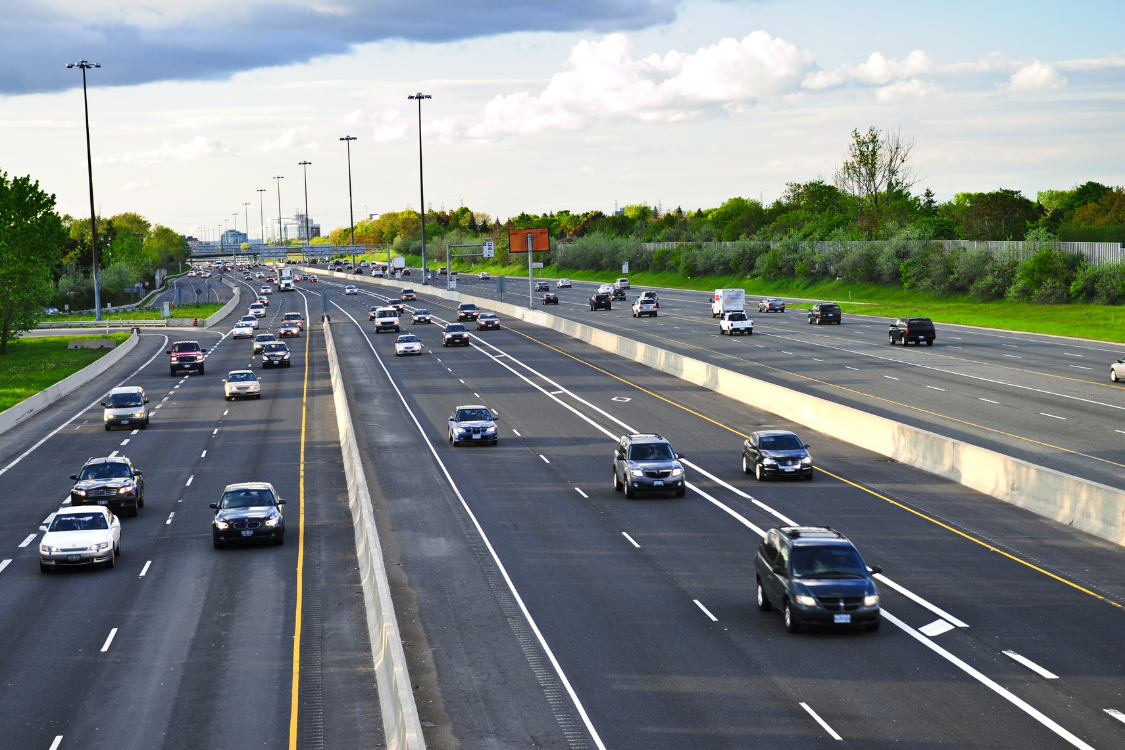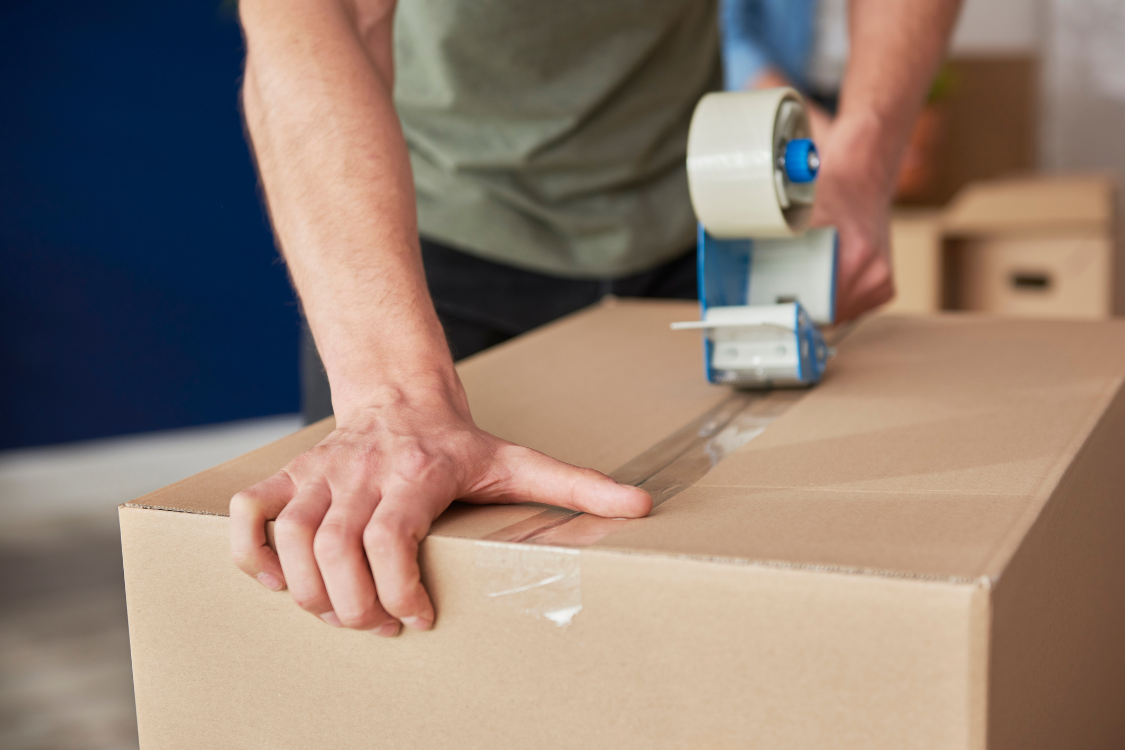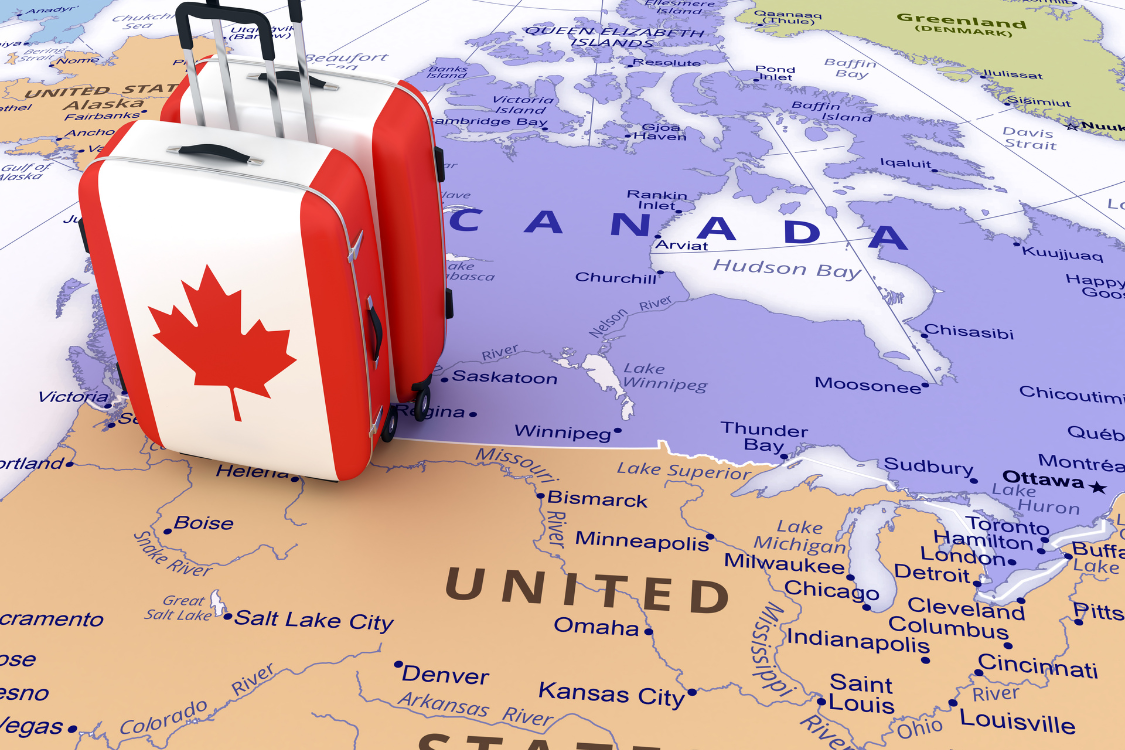At Atlas, the US/Canada border is more than just a line on a map—it’s an important part of our expertise. As the preferred mover for cross-border relocations, we handle thousands of shipments each year, making us the trusted choice for families moving between the US and Canada. When you move with Atlas, our experienced cross-border professionals will ensure a seamless, stress-free experience.
As your dedicated van line, we are here to guide you throughout your relocation and explain the steps required to make your move a success. One of your responsibilities is to provide the necessary personal documentation required by Canada Customs, ensuring your belongings cross the border without delays.
This booklet offers essential information about common concerns and provides contact details for the various government agencies that can address your specific situation.
Important Notice:
- You are required to personally meet your Trusted Agent at the Canada Customs inland facility to have your shipment legally imported.
- Movers are required to file inbound shipments in advance even though actual clearance of the shipment doesn’t occur until the owner of the goods meets the Trusted Agent at Canada Customs inland facility.
- Provide your mover with a copy of the following documents: passport(s), work visa or permanent resident card, stamped copy of B4A (also known as BSF186A), and your typed inventory.
- If shipping a recreational motor vehicle (motorcycles, ATVs, etc.), you are required to provide your mover with the original title to present to US Customs before exiting the United States.

What Happens When Your Possessions Arrive In Canada
Once your shipment has reached the border, you are required to meet your Atlas Van Operator at the nearest Canada Customs facility to clear your shipment. We cannot legally deliver your possessions until this step is completed. Your Atlas Van Operator will contact you to make the arrangements. In some centers, an appointment is required while in other locations, it is on a first-come/first served basis. Depending on the destination, you may have to travel to a major city to reach the inland customs office.
Note:
Shipments in “Bonded-Storage”
If you are not available to accept your goods or have decided to place your goods in storage, they will be placed in “bonded-storage”. When you are ready to have your goods delivered, you will have to contact your Atlas agent where the goods are stored to obtain copies of the Trusted Agent’s paperwork, and then report to the Canada Customs facility to clear your shipment. Canada Customs will stamp the documents. These documents should then be returned to the storage Atlas agent and arrangements made to deliver your possessions to your new home.

Personal Documents Requirements
Step One:
B4A/BSF186A Form: Personal Effects Account Document (list of goods imported)
Canada Customs requires you to complete an inventory list of goods being imported. This list can be created using the B4A/BSF186A form “Personal Effects Account Document (list of goods imported)” as your guideline or a typed inventory list is also accepted. You cannot use the Atlas inventory forms prepared by your Atlas Van Operator, as the items packed are not individually noted. Your inventory list must include separate sections for goods imported with you at the time of entry and goods which are to follow at a later date. All items imported on the moving van at a later date should be marked as “goods to follow”. A sample of the B4A/BSF186 is included in this booklet for your reference. To access an online version, go to www.cbsa-asfc.gc.ca/publications and choose “Forms” B4A/BSF186A. They are available by number.
Based on the inventory list of goods you submit, the Canada Customs officer will complete a B4A/BSF186A form, assign a file number and give you a stamped copy as your receipt. You will need to present this document when you meet your Atlas Van Trusted Agent Customs inland facility.
Step Two:
Bring the following documentation with you to the Canada Customs office:
Non-Resident on a Work/Study/Investor Visa
- Customer’s Passport – Copy of passport for each accompanying family member
- Your copy of stamped B4A/BSF186A form
- Copy of Work/Study Visa
- Offer of Employment Letter (without confidential information)
- Copy of Marriage Certificate if spouses have different last names
- Completed copy of Atlas Van Operator’s inventory list
- Copy of Mover’s Bill of Lading
- Copy of Recreational Vehicle Titles of Ownership or Registration (if applicable)
Returning Canadian Citizens
- Customer’s Passport – Copy of passport for each accompanying family member
- Your copy of stamped B4A/BSF186A form
- Proof of length of time away from Canada (lease documents, pay stubs, etc.); you can also use the Work Visa stamped in your passport
- Completed copy of Atlas Van Operator’s inventory list
- Copy of Mover’s Bill of Lading
- Purchase receipts for goods acquired while out of the country (past 6 months)
- Copy of Recreational Vehicle Titles of Ownership or Registration (if applicable)
Part-Time Seasonal Residents
- Customer’s Passport – Copy of passport for each accompanying family member
- Your copy of stamped B4A/BSF186A form
- Proof of ownership or lease of seasonal property
- Completed copy of Atlas Van Operator’s inventory list
- Copy of Mover’s Bill of Lading
- Proof of US residency (State driver’s license)
Duties/Taxes:
If taxes or duties are owed, you will be required to pay before goods are released. Cheques, cash, major credit cards or Canadian bank debit cards are accepted.
Note: The difference between the B4A/BSF186A and the B4/BSF186 form is that the form with “A” are for goods to follow (so items on the truck) the form without the “A” are for the customer to list items that they are taking themselves.
Special Note: for Returning Canadians
If you have been out of Canada for less than five years, you must have owned and used items for at least six months in order for them to be tax and/or duty-free. If you have been out of the country for more than five years, the six-month rule does not apply.
However, there is one major exception for any single item (including automobiles) that has a value in excess of $10,000. Canada Customs will assign a value converted to Canadian dollars then deduct a $10,000 exemption. Tax and or duties will be charged on the net difference. If the automobile was made in Canada, United States or Mexico it is usually duty-free under the USMCA agreement therefore only tax will be levied. However, vehicles manufactured outside of this zone will attract both tax and duty.
For more information go to Canada customs website at www.cbsa-asfc.gc.ca/publications and choose “D Memoranda” D19-12-1: Importation of Vehicles and D2-3-2: Former Residents of Canada.
Exporting A Motor Vehicle From The United States
US Customs/Homeland Security controls the export of automobiles from the United States. This is part of their “anti-theft” initiative. Motorized vehicle(s) with US plates (including motorcycles and ATVs) must be exported legally from the US into Canada. In most cases, cars and trucks do not travel on the moving van and other third-party arrangements must be made. If you’ve made arrangements with your Atlas agent to transport your recreational vehicle (motorcycle, ATV, etc.) you are responsible to complete the documents below on your own. If you are using a third-party carrier, you are required to provide the documents below to them.
Required Documents for Motor Vehicles:
- Original Title or certified copy of the Original Title
- Copy of bill of sale for the vehicle at least one week prior to your moving date
For any recreational vehicles shipping on the moving van, our Van Operator must carry the Original Title with him so that he can report to US Customs at the port of exit for final inspection of the document and the vehicle itself. If you are driving your own vehicle, your Atlas representative will provide you with detailed instructions on how to complete this process on your own. In order to export a vehicle(s) from the US, it is recommended that a US Customs Broker be contacted to assist with the process.
For more information about exporting a vehicle, visit the US Customs and Border Protection website at www.cbp.gov/trade/basic-import-export/export-docs/motor-vehicle. You can locate Ports of Entry by visiting www.cbp.gov/contact/ports.
Importing a Motor Vehicle Into Canada
Your automobile must meet Canadian safety and emission standards. Transport Canada has contracted with Livingston International to administer their RIV program. You can find complete details and step by step instructions at www.riv.ca, call 1-888-848-8240 or send an email to support@support.riv.ca. You will need the year, make, model and VIN of your vehicle when checking to determine if it is eligible for importation. A list of eligible vehicles can be found on the RIV website.
Entry into the RIV program usually takes place at the same time as Customs clearance in Canada. You will have 45 days to make any necessary modifications before the vehicle can be registered in your new province. The current fee for the RIV program is $325.00 plus applicable taxes but is subject to change. You will also require a letter from your automobile manufacturer (not dealer) confirming that any recalls have been addressed.
Note:
Special Exemptions for Short-TermWork Visa
If you are coming to Canada on a Work Visa that has been issued for 36 months or less then you are exempt from complying with the Registered Imported Vehicle (RIV) program described below.
However, please note that the automobile cannot be sold in Canada and must be exported back to the United States when your work
permit expires. Canada Customs has the right to request that a bond be posted or a deposit provided to ensure that the vehicle will be exported at the end of the work permit period. If this occurs, make sure that Canada Customs provide you with a copy of an E29B form so that you can claim your refund when you leave Canada.
Importing Alcohol And Wine Collections
Movers do not transport wine or liquor on the moving van along with your household goods for safety reasons. A third-party carrier will need to be arranged to handle large quantities or wine collections.
You should be aware that you are only entitled to import a limited quantity of alcohol products tax and duty-free. At present the limit is 40 oz. of liquor per person of legal age by province. If you intend to import the contents of a home bar or wine collection you must make separate shipping arrangements and contact the appropriate provincial liquor control board to determine the amount of tax/duty that must be paid in advance. Canada Customs will not release the shipment without proof of payment.
Importing Food
Normal pantry items (i.e. tea, coffee, spices, etc.) can be imported, however, meat products and dairy products are prohibited. Pet food from the United States is also permitted. For a complete list of admissible items go to www.inspection. gc.ca and choose “Importing food, plants or animals”.
Importing Firearms And/Or Ammunition
Canada has very strict laws regarding firearms. As such, your mover does not transport firearms on the moving van along with your household goods for safety reasons. A third-party licensed gun importer will need to be arranged to properly import these items.
If you are planning on bringing firearms into Canada you have to declare all such items when you enter the country. If you do not declare them, they will be seized. To obtain a list of prohibited weapons and devices go to Canada
Custom’s Import and Export page at www.cbsa-asfc.gc.ca/import/iefw-iefa-eng.html. For more information, contact the Canadian Firearms centre at 1-800-731-4000.
Note: For Returning Canadians
If you are returning to Canada with firearms that were previously acquired in Canada, you must provide proof to Canada Customs that the firearms were exported and are now being re-imported.

Importing Your Family Pets
Dogs
Dogs over the age of eight months must be vaccinated against rabies before entering Canada. A valid rabies vaccination certificate must accompany the animal. It must identify the animal by breed, age, colour and markings, include the date of vaccination and the expiry date. It must be signed by a licensed veterinarian.
Cats
Cats over the age of three months must be accompanied by a valid rabies vaccination certificate that identifies the animal by breed,
age, colour and markings, and should include the date of the vaccination and the expiry date. The certificate must be signed by a licensed veterinarian.
Birds
It is possible to import personally-owned pet birds under the following conditions:
- Birds must accompany the owner or be in the possession of an immediate family member at time of entry into Canada.
- Owner must sign a declaration stating that the bird(s) have been in his/her possession for a 90-day period preceding the date of importation and have not been in contact with any other birds.
- Owner must sign a declaration stating that the birds are not for resale.
Under these conditions, no quarantine period or import permit is required.
Other Types of Animals or Reptiles
For all other types of pets or more information, contact the CFIA at 1-800-442-2342 or go to their website at www.inspection.gc.ca and choose “Importing or Travelling with Pets”.
Exotic Pets, Endangered Species or Hunting Trophies
There are various regulations involved to import more exotic pets, endangered species and hunting trophies.
Step One:
Obtain an export permit from the United States. Go to www.aphis.usda.gov and choose “imports & exports” then choose “animals”. US Fish and Wildlife Service handle the permits for the export and import of endangered species. Go to www.fws.gov for more information.
Step Two:
Obtain an Import Permit from Canada through Environment Canada and CITES. Go to their website at travel.gc.ca/travelling/documents/ cites-permits or call 1-855-869-8670 for assistance. Please note that it can take several weeks to obtain these permits so please make arrangements well in advance of your move.

Moving To Canada Contact Information
For Visa Information:
Canadian Citizenship and Immigration
1-888-242-2100
www.cic.gc.ca
For Customs Information:
Canada Border Services Agency
506-636-5064 or 1-800-461-9999
Email: contact@cbsa.gc.ca
www.cbsa-asfc.gc.ca
For Motor Vehicle Importation:
Registrar of Imported Vehicles
1-888-848-8240
Email: support@support.riv.ca
www.riv.ca
For Firearm Importation:
The Canadian Firearms Program
1-800-731-4000
www.cbsa-asfc.gc.ca/import/iefw-iefa-eng.html
For Animal Importation:
Canadian Food Inspection Agency
1-800-442-2342
www.inspection.gc.ca
Canadian Government Contact List:
The list of Canadian Government Agencies above can provide you with additional assistance, specific to your personal situation, and have forms available for download from their website.





















